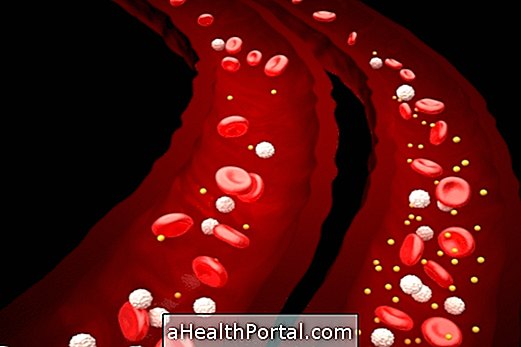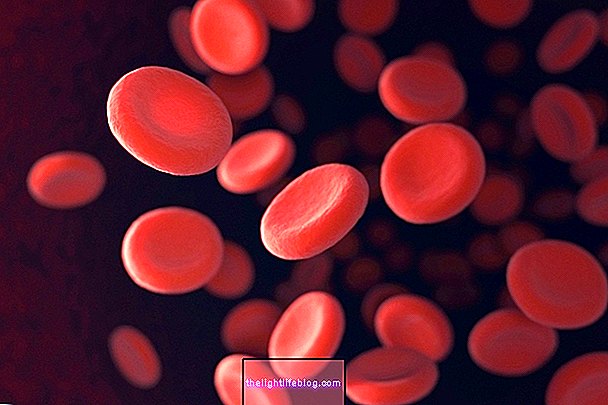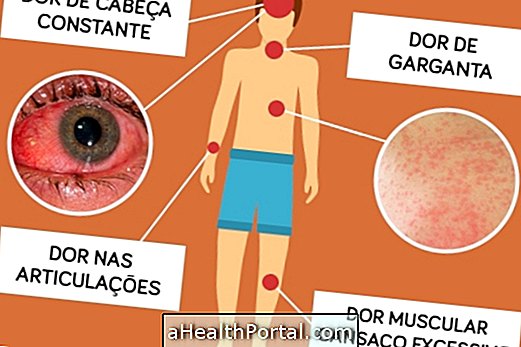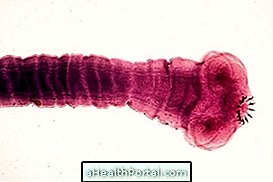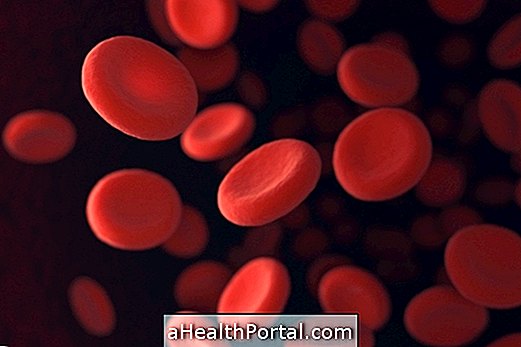Vasculitis, also called Angeitis, is inflammation of the walls of blood vessels that can affect only one vessel or can be severe and affect various vessels and even different organs and systems of the body. The main consequence of vasculitis is the interruption of blood flow from the affected vessel that may result in ischemia and therefore should be treated as soon as possible.
As any blood vessel in the body can be affected, vasculitis can produce very different symptoms, related to the region affected by the disease or organ that has been compromised.
Vasculitis may still be one of the symptoms of diseases such as erythema nodosum, schönlein-henoch purpura, Buerger's disease, periarteritis nodosa, temporal arteritis or serum sickness, and in this case it is necessary to treat the underlying disease so that cure vasculitis is achieved.
Photos of vasculitis
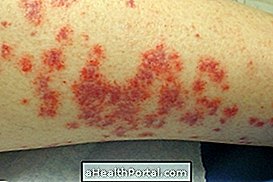

What are the symptoms
The classic symptoms of vasculitis are usually:
- Red spots on the skin, which is a sign of blood leakage;
- Sensation of tingling or loss of sensitivity of the region affected by vasculitis;
- Pain in joints near the region affected by the disease.
Other symptoms that may also be present in vasculitis are:
- Fever;
- Loss of appetite;
- Malaise;
- Weight loss of 4 kg or more without apparent cause;
- Abdominal pain;
- Tiredness.
According to the site of the vasculitis, it may still generate symptoms such as:
- Nasal crises, sinusitis, nasal pain, deafness, hoarseness when it affects ears, eyes and throat;
- Cough, wheezing, coughing up blood, shortness of breath, pneumonia resistant to antibiotics, when it affects the respiratory system;
- Pain, redness, impaired vision, when it affects the eyes.
- Abdominal pain, when it affects the gastrointestinal tract;
- Urine blurred, urine with blood or presence of protein in the urine, when it affects the kidneys;
- Paresthesia and weakness, when it affects the nervous system;
- Heart disease and heart attack when it affects the heart.
Possible causes
The causes of vasculitis are not yet fully understood, but it is known that it can occur due to the use of drugs such as cocaine or amphetamines, presence of hepatitis B or C virus in individuals who have polyarteritis nodosa or parvovirus B19, as in Wegener's granulomatosis, and Kawasaki disease, hypersensitivity reaction, genetic predisposition and failure to regulate immune mechanisms that participate in the response to some allergy-causing agents.
In addition, vasculitis may still be caused by side effects of some medication, such as Penicillamine, Propylthiouracil, Hydralazine and Minocycline or exposure to silica.

How is the diagnosis made?
For the diagnosis of vasculitis, the history of the individual should be associated with the symptoms presented and it is recommended that some tests be done, such as:
- Complete blood test;
- Erythrocyte sedimentation rate;
- Coagulogram;
- Urea, electrolytes, creatinine and creatinine clearance;
- Liver function tests, such as C-reactive protein evaluation;
- Protein and immunoglobulin electrophoresis;
- Measurement of ANCA, FAN and ENA antibodies;
- Rheumatoid factor;
- Complement C3 and C4;
- Anticardiolipin antibody;
- Cryoglobulins;
- Hepatitis B and C tests;
- Urine and uroculture examination;
- Chest X-ray.
In addition to these tests, the doctor may also order other tests to evaluate the function of organs affected by the disease, such as magnetic resonance, ultrasound or computed tomography, in addition to the evaluation of the specialist physician. These tests are necessary to be able to be sure about the vasculitis and may help in its classification, being very important for the treatment of the disease.
What types of vasculitis
The existing types of vasculitis are:
Vasculitis of small and microscopic vessels | Churg-strauss vasculitis or allergic granulomatosis; |
Vasculitis of medium and small vessels | Polyarteritis nodosa; |
Vasculitis of large vessels | Arteritis of Takayasu; |
How is the treatment done?
The treatment of different forms of vasculitis should be performed according to the nature and severity of the clinical picture. It is important to diagnose the disease and classify it correctly so that the treatment is well targeted.
In some cases, the physician may prescribe corticosteroids and immunosuppressants, but in severe vasculitis affecting organs and systems, the individual should remain hospitalized for appropriate treatment.
Vasculitis has a cure?
Vasculitis does not always have a cure because in some cases the disease may be autoimmune and in this case the individual should follow the proposed treatment for life. The cure of the disease will always depend on what originated it.


